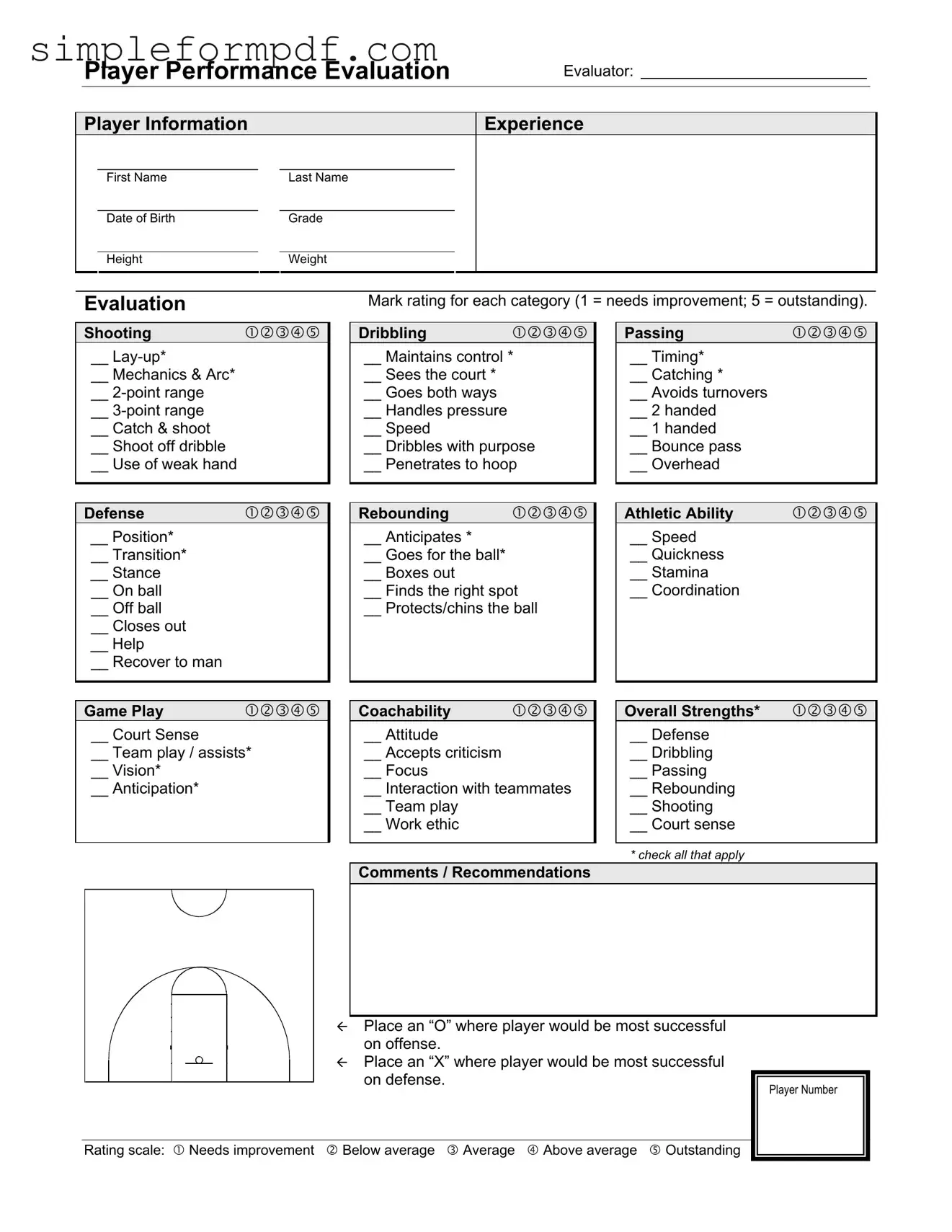Basketball Evaluation PDF Form
The Basketball Evaluation Form is a structured tool designed to assess a player's performance across various skills and attributes. It provides coaches and evaluators with a comprehensive overview of a player's strengths and areas for improvement, helping to guide training and development. To contribute to a player’s growth, consider filling out the evaluation form by clicking the button below.
Launch Editor

